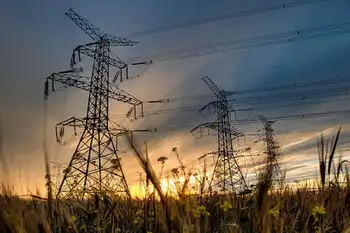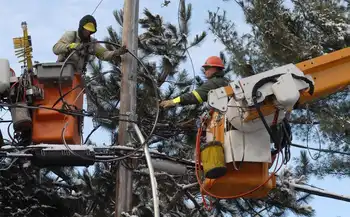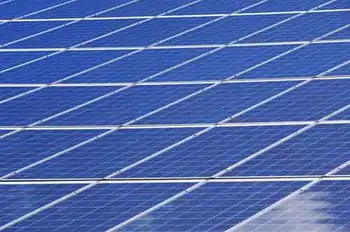TVAÂ’s role in nuclear defense to grow
CHATTANOOGA, TENNESSEE - The United States maintains a hardline policy opposing countries' use of civilian nuclear reactors to produce material for weapons, including Iran and North Korea.
But that is what the U.S. Department of Energy has been doing at the Tennessee Valley Authority's Watts Bar reactor in East Tennessee since 2003, and now the department has signaled its intention to start additional production of tritium at TVA's Sequoyah plant, near Chattanooga.
Tritium, which is a radioactive form of hydrogen, is needed to boost the explosive power of nuclear warheads. The DOE's 2010 budget proposal includes plans to make tritium at the two Sequoyah reactors, and TVA spokesman Terry Johnson confirmed that the electricity-generating plant is being prepared for the production of the weapons material.
"It's part of national defense needs, and TVA is participating in that," Johnson said. "We feel it's a saving overall for the nation as a whole." He said he doesn't expect production to start before at least 2012.
Critics say, in addition to posing environmental and safety concerns, the move is undermining U.S. policy and the international nuclear nonproliferation treaty that it is a party to.
"The expansion of and continued use of these facilities contradicts our message elsewhere around the world that civilian-power-generating reactors should not be used for military purposes," said Daryl Kimball, executive director of the Washington-based Arms Control Association, which was established in 1971 to monitor and encourage arms control.
"This has been a core principle of the United States and our allies for more than four decades."
Jennifer Wagner, a spokeswoman for DOE's National Nuclear Security Administration, said, "Our justification is obviously that our core mission is to maintain the safety and reliability of our stockpile so we have an effective deterrent."
She referred to a speech by President Barack Obama in Prague earlier this year in which he said the goal was to reduce the overall number of nuclear weapons but to maintain an arsenal sufficient to discourage other countries from nuclear arms use.
Tom Clements, Southeastern Nuclear Campaign Coordinator for Friends of the Earth, questions why the expansion is needed when there seems to be no shortage of tritium.
"Indications to me are there's an ample stockpile, and it's only going to get bigger with increased disarmament," he said.
But given the nature of the program, DOE does not make public how much tritium is available. A March document from the Defense Nuclear Facilities Safety Board, an independent federal agency with oversight of DOE's nuclear weapons complex, refers to plans to cut back production, in contrast to the budget document.
DOE quit making its own tritium in 1988, closing down its aging reactors at its Savannah River Site in South Carolina, which had safety issues.
The material is being recycled from nuclear weapons as they're dismantled under an international treaty, but fresh tritium is also needed to keep remaining weapons viable, according to DOE. That's because it decays by about 5 percent a year. The radioactivity has a half-life of about 12 years, meaning half of it dissipates over that time. In contrast, plutonium in the warheads has a half-life of 24,000 years.
Rather than building a costly new reactor, DOE turned to TVA, working out an agreement with the electricity producer in 1999 to produce the material.
TVA, an independent federal body that supplies electricity to Tennessee and parts of six other states, has previously played a role in defense needs, including producing phosphorus and ammonium nitrate for explosives and munitions during World War II and the Korean conflict.
It had never taken part in providing radioactive materials for nuclear arms.
Tritium production at Watts Bar means higher radiation doses for those at the nuclear plant and within a 50-mile radius, but it's an insignificant amount, according to an Environmental Impact Statement on the project that the U.S. Environmental Protection Agency approved in 2000.
The process involves placing rods containing lithium about 12 feet long into the reactor. They're similar to the rods filled with uranium pellets that fuel the nuclear reaction, which cranks out heat that ultimately boils water for steam. That steam goes into a turbine to produce electricity.
When the reactor is refueled at about 18 months, the tritium rods are removed and left to cool about four months before shipping to the DOE's Savannah River Site about 330 miles away.
Once there they're processed and tritium is captured for stockpiling. Savannah River also processes tritium for recycling from nuclear weapons that are dismantled at the Pantex plant in Texas.
Since production began at Watts Bar, tritium has been found in groundwater on the site, and higher levels than expected have shown up in the cooling water.
"It hasn't gone above regulated limits," Johnson said. "The tritium that does not stay in the rods is still within the limits the plant is licensed for."
Johnson said the Department of Energy pays the cost of whatever expenses are incurred in tritium production at Watts Bar.
"It's not an issue for ratepayers, because this is a reimbursable project," he said, adding that the tritium in the groundwater is not related to the tritium production.
There were leaks found in equipment at the plant, and there has been no indication that the low levels in the groundwater have moved off site or into drinking water supplies. They have been decreasing, he said.
Small amounts of tritium, which also occurs in nature, are a byproduct of nuclear energy production. Contamination from it has been found at several reactors around the country, including Sequoyah.
DOE information says Watts Bar's cooling water is receiving only a minuscule amount more than expected of tritium, a material used also for runway lights.
Several of the rods that have been irradiated for DOE in the Watts Bar reactor will be examined at labs in Idaho and Richland, Wash., to try to understand why greater than expected tritium is moving into the cooling water, according to part of the DOE's 2010 budget proposal.
Friends of the Earth on Thursday sent a request to DOE that a supplemental environmental study be completed before moving forward with production at Sequoyah. Clements asked for an analysis of the need for more tritium, an investigation of the higher-than-expected releases into the cooling water at Watts Bar and study of design changes proposed for the rods.
In the late 1990s, when the Department of Energy began discussing tritium production at Watts Bar, TVA officials painted the arrangement, at least partially, as a potential business deal that could help reduce the $27 billion worth of debt the agency was then carrying.
"This is a program of national importance, and we feel we could find some financial benefits for TVA," TVA's Kay Whittenburg had said in 1997, of the arrangement with DOE.
It didn't work out that way, according to Johnson.
"No profit has been made," he said. "This is on a cost basis for TVA. We get compensated for our costs for tritium production."
TVA is paid about $30 million a year for the costs, with 70 percent going to pay for the additional uranium fuel needed for the tritium production, he said.
When TVA first made its agreement with DOE, Sequoyah had been viewed as a backup as needed. Its time has come, according to the DOE budget proposal.
Ralph Hutchison, with the Oak Ridge Environmental Peace Alliance, had objected when the project was first proposed in the 1990s that the plants could become a focus for terrorists and said that's even more the case after the terrorist attacks of September 11, 2001.
"If anything, the concern should be greater," he said. "These are the least secure and the least guarded nuclear production facilities that we have in the U.S. They're producing materials for thermonuclear weapons.
"I can hardly imagine making a more dramatic statement if you were a terrorist."
Johnson said armed guards, thick containment walls and many high security measures have always been in effect.
"Nuclear plants continue to be among the best protected facilities in the United States," he said.
Related News

Ontario Providing Support for Industrial and Commercial Electricity Consumers During COVID-19
TORONTO - Through an emergency order passed today, the Ontario government is taking steps to defer a portion of Global Adjustment (GA) charges for industrial and commercial electricity consumers that do not participate in the Regulated Price Plan for the period starting from April 2020. This initiative is intended to provide companies with temporary immediate relief on their monthly electricity bills in April, May and June 2020. The government intends to keep this emergency order in place until May 31, 2020, and subsequent regulatory amendments would, if approved, provide for the deferral of these charges for June 2020 as well.
This…




